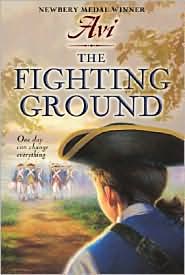
Hale, Shannon. 2005. Princess Academy. New York: Bloomsbury Children's Books. 1599900734
2. Summary:
Miri is a fourteen-year-old girl who lives in the small town of Mount Eskel. When the priests of the land prophecy that the prince's bride would come from this town, all of the common girls aged 14-17 must attend a Princess Academy where they will be trained to become ladies worthy of the prince. While Miri excels at the academy, it is not the prince's heart that she longs to capture but a boy back home and the knowledge that will take her out of the town she doesn't quite realize she loves. As she struggles with her feelings and desires, she must become a leader at the academy and save the girls she has come to love.
3. Analysis:
What girl doesn't want to be a princess if not to just one person? Girls will identify with this common girl who stands there "dumb and embarrassed" around the boys she likes, unsure of her place. Although girls today are not shipped off to audition for the role of princess, they walk the halls of a school, showcasing their clothes and attitude in an effort to win the favor of those around them. Therefore, they can relate to this shy girl who is unsure of her physical stature and must learn to fill the big shoes of saving the girls at the academy from the evil Dan and his bandits who have captured the girls and hold them hostage. Since girls have been reading classic fairy tales like "Cinderella" and even modern fairy tales like "Aladdin," it is not a stretch for them to imagine a world where a mountain girl can become princess of the land.
The author gives vivid details of the "country girl come to the city," which made me laugh out loud. The teacher, Olana, greets the students only to be greeted with the scent of goats. She says," Do you people live with goats?" The following sentence doesn't have the girls answering verbally but says,"They did, of course, live with goats" followed by the rationale for doing so. This scene and others like it set the stage for what a big transformation it will have to be for one of these girls to be compatible with the prince.
Although the book follows a steady pace in the sequence of events, the end is wrapped up too quickly and too easily. Miri's time at the academy takes several chapters while the prince finding his love Britta, Miri finding out why her father never let her work with the others, and Miri's deciding to start a school seem rushed and deserved more time and explanation. The author also spends a lot of text discussing the rules to winning an argument and other things that Miri is learning when that text could have been spent developing characters or explaining what it is exactly that the people of her village actually do with the rocks and how it is that they communicate telepathically.
I enjoyed the book until its quick end and wrap-up. I would have liked to read more detail about Miri's work as a teacher since so much of the book's message to me was about the girls not just learning to fit into a different society but learning in general. Miri soaked up information like a sponge in the desert and more information about her sharing that would have smoothed out the ending for me.
4. Reviews:
Publisher Weekly: "Unfortunately, Hale's lighthearted premise and underlying romantic plot bog down in overlong passages about commerce and class, a surprise hostage situation and the specifics of "quarry-speech." The prince's final princess selection hastily and patly wraps things up." Copyright 2005 Reed Business Information.
Children's Literature: "This is a delightful tale for everyone who loves the fantasy that even a common girl can become a princess. "
Children's Literature: "This is a delightful tale for everyone who loves the fantasy that even a common girl can become a princess. "
5. Connections:
This would be a great literature circle book. I think if my school had enough copies, I would offer it as a selection and see if the students came to the same conclusion about the ending that I did. Excerpts like the one about sleeping with the goats or the climatic scene where Miri and Dan plunge over the side of the mountain would be great for teaching individual aspects of literature. Having the students read the selection of Miri fighting Dan to save the others aloud would be fabulous. I would stop right when they go off the edge, have the kids write what happens next, and then read what actually happens next.




